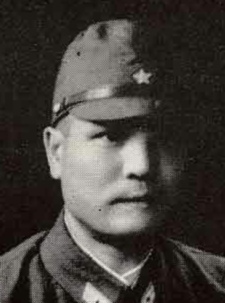|
Azad Brigade
The Azad Brigade or the 3rd Guerrilla Regiment was a unit of the Indian National Army The Indian National Army (INA, sometimes Second INA; ''Azad Hind Fauj'' ; 'Free Indian Army') was a Empire of Japan, Japanese-allied and -supported armed force constituted in Southeast Asia during World War II and led by Indian Nationalism#An ... that formed a part of the First INA and later part of the 1st Division after the INA's revival under Subhas Chandra Bose. After the revival of the INA in February 1943, the 3rd Guerrilla Regiment came under the command of Col. Gulzara Singh and consisted of three infantry battalions. It was one of the units that participated in the INA's disastrous Imphal Campaign, arriving in upper Burma immediately before the withdrawal began, protecting and supporting the Japanese forces withdrawing from the Indo-Burma border through the Kabaw Valley. It later came under the command of Shah Nawaz Khan in 1944. References *Fay, Peter W. (1993), ''The Forgotten ... [...More Info...] [...Related Items...] OR: [Wikipedia] [Google] [Baidu] |
Indian National Army
The Indian National Army (INA, sometimes Second INA; ''Azad Hind Fauj'' ; 'Free Indian Army') was a Empire of Japan, Japanese-allied and -supported armed force constituted in Southeast Asia during World War II and led by Indian Nationalism#Anti-colonial, anti-colonial nationalist Subhas Chandra Bose. It comprised primarily of British Indian Army prisoners of war, POWs taken by Empire of Japan, Japan. Indian civilians in the region were also enlisted, with around 18,000 joining. * # # # # "The second INA involved Indian society in Southeast Asia in a way the earlier incarnation had failed to do so. ... Men were recruited locally, and ... special emphasis was placed on the Tamils of Malaya." The INA aimed to liberate India from British Raj, British rule. # # After winning Japanese assent for its goal, the INA furnished support to the Imperial Japanese Army, Japanese Army. # # # The Japanese and INA forces Operation U-Go, invaded India from Rangoon in 1944, and Bose's nominal Pr ... [...More Info...] [...Related Items...] OR: [Wikipedia] [Google] [Baidu] |
First INA
The First Indian National Army (First INA) was the Indian National Army as it existed between February and December 1942. It was formed with Japanese aid and support after the Fall of Singapore and consisted of approximately 12,000 of the 40,000 Indian prisoners of war who were captured either during the Malayan campaign or surrendered at Singapore. It was formally proclaimed in April 1942 and declared the subordinate military wing of the Indian Independence League in June that year. The unit was formed by Mohan Singh. The unit was dissolved in December 1942 after apprehensions of Japanese motives with regards to the INA led to disagreements and distrust between Mohan Singh and INA leadership on one hand, and the League's leadership, most notably Rash Behari Bose. Later on, the leadership of the Indian National Army was handed to Subhas Chandra Bose. A large number of the INAs initial volunteers, however, later went on to join the INA in its second incarnation under Subhas C ... [...More Info...] [...Related Items...] OR: [Wikipedia] [Google] [Baidu] |
Imphal Campaign
The Battle of Imphal () took place in the region around the city of Imphal, the capital of the state of Manipur in Northeast India from March until July 1944. Japanese armies attempted to destroy the Allied forces at Imphal and invade India, but were driven back into Burma with heavy losses. Together with the simultaneous Battle of Kohima on the road by which the encircled Allied forces at Imphal were relieved, the battle was the turning point of the Burma campaign, part of the South-East Asian theatre of World War II. The Japanese defeat at Kohima and Imphal was the largest up until that time,Bond, Tachikawa p. 122 with many of the Japanese deaths resulting from starvation, disease and exhaustion suffered during their retreat. According to voting in a contest run by the British National Army Museum, the Battle of Imphal was bestowed as Britain's Greatest Battle in 2013. Situation Background In March 1943, the Japanese command in Burma had been reorganised. A new headquarters ... [...More Info...] [...Related Items...] OR: [Wikipedia] [Google] [Baidu] |
South-East Asian Theatre Of World War II
The South-East Asian Theatre of World War II consisted of the campaigns of the Pacific War in the Commonwealth of the Philippines, Philippines, Thailand, Dutch East Indies, Indonesia, Indochina, British rule in Burma, Burma, British Raj, India, British Malaya, Malaya, and Singapore in the Straits Settlements, Singapore between 1941 and 1945. Japan attacked British and American territories with near-simultaneous Japanese expansion (1941–1942), offensives against Southeast Asia and the Central Pacific on 7/8 December 1941. Action in this theatre ended when Japan Jewel Voice Broadcast, announced an intent to surrender on 15 August 1945. The formal surrender of Japan ceremony took place on 2 September 1945. Outbreak of hostilities Conflict in this theatre began when the Empire of Japan invaded French Indochina in September 1940 and rose to a new level following the Attack on Pearl Harbor, and simultaneous attacks on the Philippines campaign (1941–1942), Philippines, Battle o ... [...More Info...] [...Related Items...] OR: [Wikipedia] [Google] [Baidu] |



